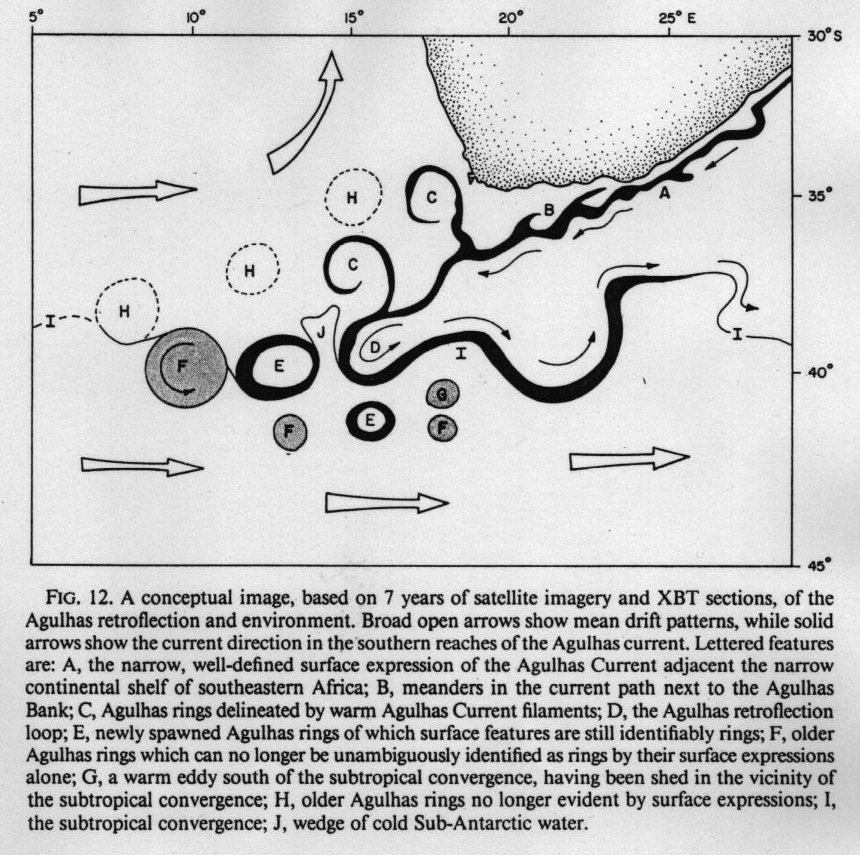Final Project Summary
Features
of the Southern Agulhas Current Region
-
Regional water mass composition is very complex.
-
Major water mass constituents include: Subtropical surface, South Indian
Central, Antarctic Intermediate, Deep and Bottom Antarctic waters.
-
Water masses of the Agulhas inflow are: Tropical Surface, Subtropical Surface,
South Indian Central, Red Sea and Antarctic Intermediate.
-
Water masses within the retroflection loop are: those listed above, North
Atlantic Deep and Antarctic Bottom.
-
Agulhas current is the most energetic of the S.H. western boundary currents.
-
Introduces warmer, more saline water into the South Atlantic subtropical
gyre by shedding retroflection eddies and warm filaments. Important
to the overall heat and salinity budget of the South Atlantic.
- Position of retroflection is geographically consistent.
- Retroflection loop encloses a pool of warm water in a region where the atmosphere is relatively cool. This results in a large heat flux to the atmosphere.
- Pichevin et al. (1999) have proven analytically that retroflection is the result of a momentum imbalance created by a zonal jet - "Retroflection Paradox".
- ~ Six retroflection eddies are formed each year. Depth ~ 1100 m; diameter ~ 200-280 km; azimuthal speeds ~. 6 m/s; volume flux ~ 3-15 Sv.
- Eddies generally propagate northwest with the Benguela Current.
- As eddies age they become increasingly difficult to identify by IR satellite imagery (large heat flux to atmosphere and persistent cloud cover). However, they are easily identifiable by their positive sea height anomalies.

From Lutjeharms and van Ballegooyen, 1988
Gustavo J., Silvia L. Garzoli, Andreas J. Roubicek, Donald B. Olson, and Otis B. Brown (1997). Agulhas Ring Dynamics from TOPEX/POSEIDON Satellite Altimeter Data. Journal of Marine Research, 55, 861-883.
Lutjeharms, J.R.E., and R.C. van Ballegooyen, (1988). The Retroflection
of the Agulhas Current, Journal of Physical Oceanography, 18,
1570-1583.
Pichevin, Thierry, D. Nof, Johann Lutjeharms. (1999) Why are there Agulhas Rings? Journal of Physical Oceanography, 29, 693-707.
Valentine, H. R., Johann Lutjeharms, and G. B. Brundit, (1993). The Water Masses and Volumetry of the Southern Agulhas Current Region, Deep Sea Research, 40, 1285-1305,
http://www.soc.soton.ac.uk/JRD/OCCAM/agulhas.html
| This is a government-maintained internet site. Please read the U.S. Navy web page disclaimerand the disclaimer regarding external links. |
|